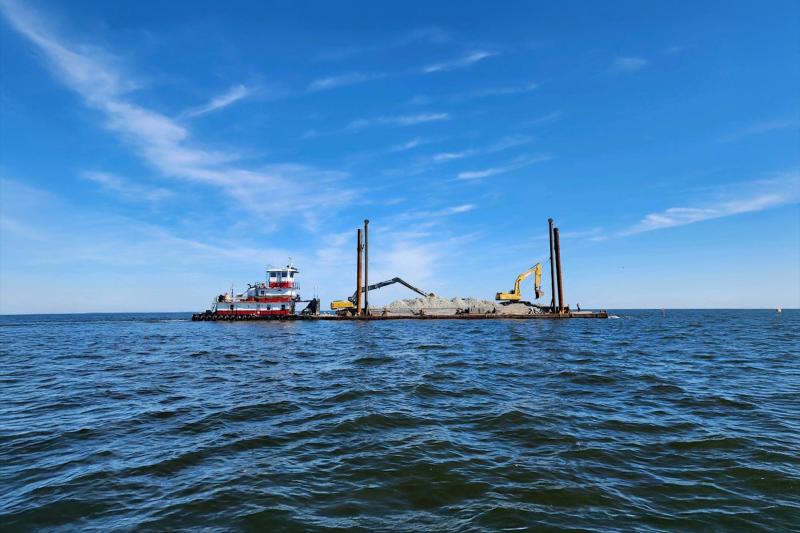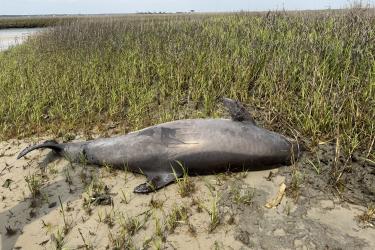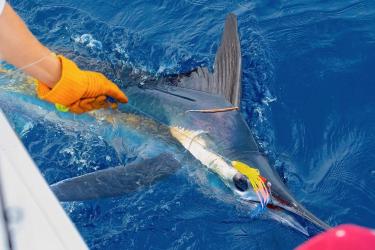A report by the North Carolina Coastal Federation shows that NOAA and our partners’ investment in oyster restoration produces almost double the amount in economic and environmental benefits. The economic report (PDF, 43 pages) found that for every $1 spent on oyster reef restoration, the state sees $1.70 in return. Independent researchers from RTI International assessed the value of restoring the 400-acre Senator Jean Preston Oyster Sanctuary Network in Pamlico Sound.
“Investing in oyster reef restoration means investing in all of the benefits these reefs provide and the benefits of the restoration work itself,” says NOAA Marine Habitat Resource Specialist Stephanie Krug. “This report is vital in telling that story.”
Economic Benefits of Restoration
Between 2013 and 2023, NOAA’s Office of Habitat Conservation, the North Carolina Division of Marine Fisheries, and local partners invested $20 million building the sanctuary network. This work:
- Supported 143 jobs
- Generated $34 million* in revenue for North Carolina businesses
- Provided $8.7 million* in employee wages and benefits
*All monetary figures in 2023 dollars
“This work is a good shot in the arm for a lot of local businesses,” says Will Hollowell, Operations Manager at Stevens Towing Company of North Carolina. The local family-owned Stevens Towing transports and deploys the limestone, granite, and other materials used as a base for oyster reef restoration in the sanctuary network. During the spring and summer months, Stevens Towing employs 10 to 15 skilled contractors to carry out the work.
“There are the local quarries that supply the rock and the truck drivers that haul 43,000 tons of rock to our location. They need fuel, and they need lunch. Our tugboats burn 1,000 gallons of locally purchased fuel a day, and I buy roughly $3,000 worth of provisions and supplies every 2 weeks. That’s a good boost to these rural areas.”
The Benefits of Healthy Oyster Reefs
Researchers expect the restored oyster reefs to produce $38 million in ecosystem benefits through 2048. Healthy oyster reefs:
- Support commercial and recreational fisheries by creating habitat for hundreds of species like blue crab, shrimp, flounder, and sea bass
- Improve water quality and clarity by removing pollutants, sediment, and excess algae
- Reduce the impact of waves and storm surges, protecting the coastline from erosion
Fishermen cannot harvest from the sanctuary reefs, but the protected oysters support other harvestable reefs by producing larvae. The sanctuary reefs represent only about 6 percent of the oyster reef footprint in the Pamlico Sound, but they produce 25 percent of the Sound’s oyster larvae. Currents disperse the free-floating larvae throughout the Sound.
“This network protects nearly 350 million oysters,” says North Carolina Coastal Federation Oyster Program Director Erin Fleckenstein. “These reefs serve as an insurance policy to our oyster populations.”
Over the last century, North Carolina lost more than 90 percent of its oyster reef area. Investing in reef restoration in Pamlico Sound is vital to preserving the benefits oysters provide.
In 2023, NOAA’s Office of Habitat Conservation awarded the Federation an additional $14.9 million to expand the sanctuary network to 500 acres by 2026. This funding comes through the Bipartisan Infrastructure Law.
Stevens Towing began building new oyster reef in 2024, and they will return in spring 2025 and 2026.
“I, as well as many members of our Stevens Towing family, grew up on the coast of eastern North Carolina so we look at this as an honor to be able to give back to the environment and be part of something bigger,” says Hollowell. “It’s nice to help secure it for our families and future generations to come.”





